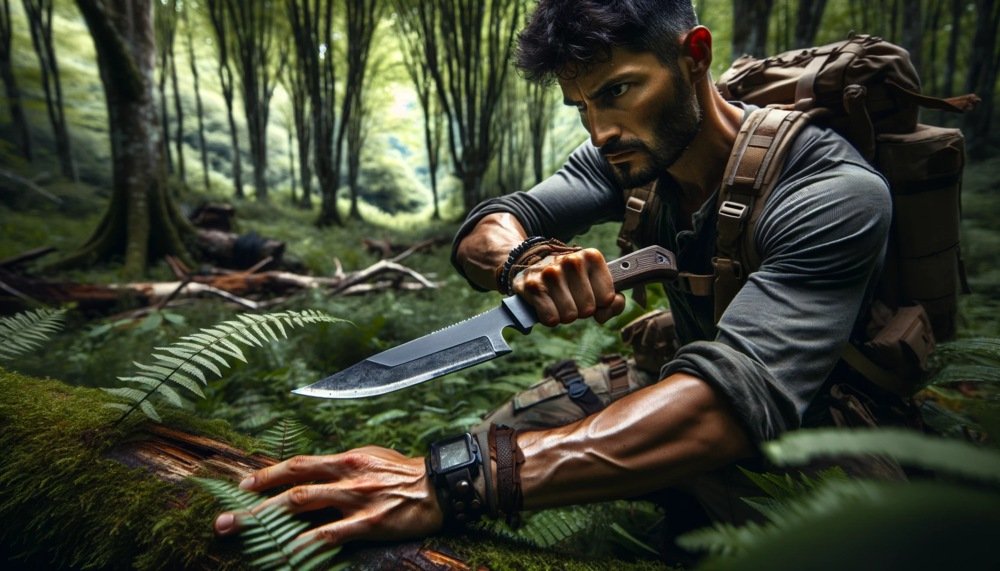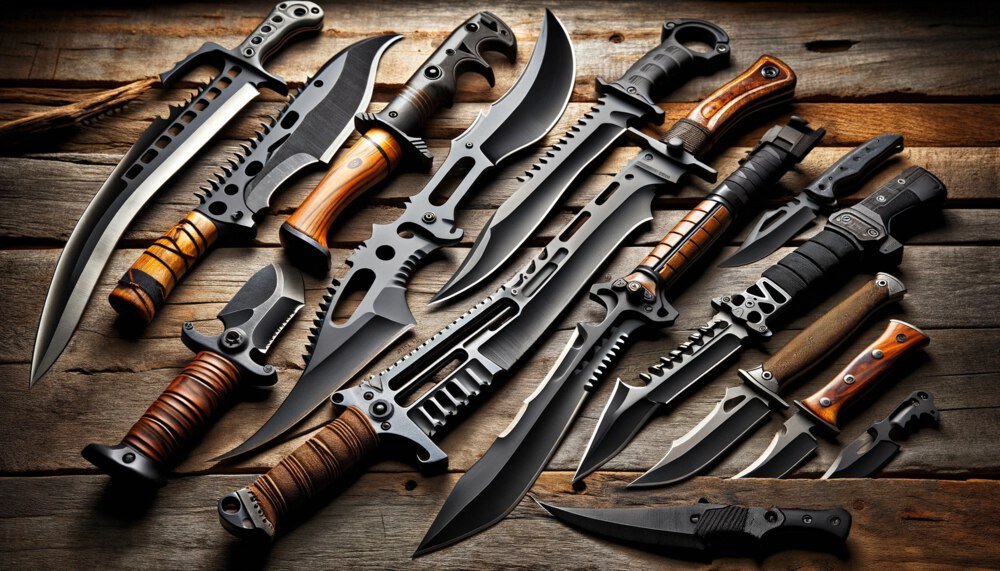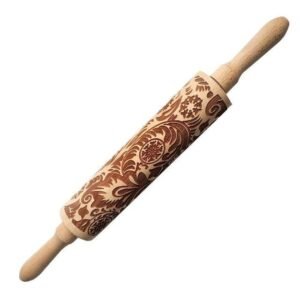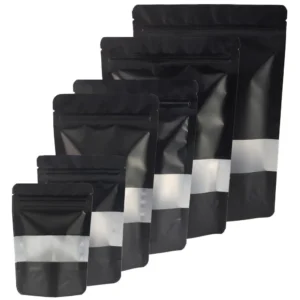- Introduction
- Machete Overview
- Machete as a Weapon in History
- Machete Variants and Manufacture
- Machete for Self-Defense
- Legality of Machetes
- Agricultural Uses of Machetes
- Cultural Impact of Machetes
- Responsibilities of Owning a Machete
- Alternative Tools and Comparisons
- Conclusion
- FAQs
- Frequently Linked Pages
Introduction
The machete, a formidable tool with a long and rich history, has proven to be much more than just a simple cutting instrument. It is often compared to swords and corn knives, and is also known as a bolo knife. Known for its sharp blade and durability, the machete has been utilized as a defense tool in various nations throughout the ages. The woodman often relies on this versatile sword for his tasks.

From its primary purpose as a tool for clearing vegetation to its role in self-defense, the machete, a versatile sword-like weapon, has earned its name as an indispensable weapon for woodmen and defenders against attackers. Used by people across different regions and nations, swords have become an iconic defense tool, symbolizing independence and resilience. From the skilled woodman to the noble pal, these weapons are cherished worldwide. Whether wielded by individuals or employed in martial arts disciplines, swords showcase both practicality and artistry.
Machete Overview
A machete is no ordinary knife. It’s a beast of a sword, large and heavy, with a broad edge that means business. I can’t wait to see your reply. While it may seem like something out of an action movie, the sword, or machete, actually serves practical purposes in agricultural and survival settings.

Machetes, also known as swords, come in various shapes and sizes, each designed for specific tasks. Whether you need to clear thick vegetation or chop firewood, there’s a machete or sword for the job. Let’s take a closer look at this versatile tool.
Large and Heavy Blade
The defining feature of a machete is its size. These sword blades are typically longer than most knives, ranging from 12 to 24 inches in length. This extended reach allows for efficient cutting and slashing with a sword through dense foliage or other materials.
In addition to their length, machetes also have considerable weight behind them, making them powerful cutting tools for sword enthusiasts. This heft gives the sword the power needed to slice through tough vegetation or even small branches effortlessly. With one swing of the sword, you can feel the force behind this formidable tool.
Agricultural Applications
One of the primary uses of machetes, a type of sword, is in agriculture. Farmers and gardeners rely on these tools, such as the sword, to tackle various tasks on their land. From clearing overgrown areas to harvesting crops, the machete proves invaluable. With its sharp blade, the sword-like machete is the perfect tool for tasks like clearing vegetation and cutting through dense foliage. Whether you’re a farmer or an adventurer exploring the wilderness, a machete is a must-have for any outdoor enthusiast.
Nothing beats a machete’s ability to swiftly cut through dense vegetation. Its long blade allows for wide swings that cover more ground with each stroke. This efficiency saves time and energy when working in large fields or gardens.
Moreover, some specialized machetes feature serrated edges near the handle. This design enables them to saw through thicker branches or even small trees when necessary. The versatility of these tools makes them indispensable on farms and plantations worldwide.
Survivalist Tool
Beyond the realm of agriculture, the machete has gained popularity as an essential survival tool among outdoor enthusiasts and adventurers alike. Its durability and versatility make it an invaluable companion in the wilderness.
When venturing into the great outdoors, a machete can help with various tasks. From building shelters to collecting firewood, this tool proves its worth time and time again. Its ability to cut through dense foliage also comes in handy when forging paths or hunting for food. In survival situations, every ounce of weight matters. That’s why many survivalists prefer machetes over bulkier tools like axes or saws.
Machete as a Weapon in History
Throughout history, machetes have played a significant role as weapons in warfare and conflicts. These versatile tools were favored by revolutionaries for their effectiveness and wide availability. Let’s delve into the historical significance of machete as a weapon.
Machetes in Warfare and Conflicts

Machetes have been used as weapons in various wars and conflicts across different regions of the world. Their origins can be traced back to agricultural tools that were repurposed for combat purposes. The simplicity of their design, with a long blade and a sturdy handle, made them ideal for close-quarters combat.
Effectiveness and Availability
One of the main reasons why machetes became popular among revolutionaries was their effectiveness on the battlefield. With their sharp blades, they could inflict serious injuries or even fatal wounds on opponents. Moreover, machetes were readily available in many regions, making them easily accessible to those fighting against oppressive regimes.
Historical Uprisings and Revolutions
Machetes played a crucial role in numerous historical uprisings and revolutions around the world. For example, during the Haitian Revolution (1791-1804), enslaved Africans used machetes as weapons to fight against French colonizers. The Haitian Revolution ultimately led to Haiti becoming the first independent Black republic.
In more recent history, during the Mau Mau Uprising (1952-1960) in Kenya, members of the Mau Mau movement utilized machetes as part of their resistance against British colonial rule. The symbolism behind using these agricultural tools turned weapons was powerful, representing a connection to their land and heritage.
Another notable example is the Cuban Revolution (1953-1959), where Fidel Castro’s guerrilla fighters known as “Los Barbudos” employed machetes alongside firearms in their struggle against dictator Fulgencio Batista’s regime.
Legacy and Symbolism
The use of machetes as weapons in historical uprisings and revolutions has left a lasting impact. These tools have become symbols of resistance, rebellion, and the fight for freedom. They represent the determination of oppressed people to rise up against injustice and oppression.
Today, while machetes are still used as agricultural tools in many parts of the world, their historical significance as weapons cannot be overlooked. In some regions, they continue to be employed by rebel groups or militias engaged in armed conflicts.
Machete Variants and Manufacture

Different regions have developed their own variations of the machete. Traditional manufacturing methods involve forging the blade from steel or iron, while modern techniques use machinery for more efficient production.
Regional Variations
The machete is not a one-size-fits-all weapon. Various regions around the world have put their own spin on this versatile tool. In Latin America, for example, the “machete de golpe” features a broad, heavy blade that is ideal for chopping through thick vegetation. On the other hand, in Southeast Asia, the “bolo” machete has a distinctive forward-curved shape that aids in clearing dense foliage with ease.
In Africa, where machetes are commonly used as agricultural tools and weapons, there are numerous regional variations. The “panga” in East Africa typically has a short, broad blade with a sharp point at the tip. In West Africa, the “cutlass” is similar to a machete but often has a thinner and longer blade.
These regional variations highlight how different cultures have adapted the design of the machete to suit their specific needs and environments. Whether it’s hacking through dense jungles or tending to crops, each variant serves its purpose effectively.
Traditional Manufacturing Methods
Before modern machinery took over, crafting a machete was an art form passed down through generations. Traditional manufacturing involved forging the blade from steel or iron using heat and hammering techniques. Skilled blacksmiths would carefully shape and sharpen the metal until it formed into a strong and durable cutting edge.
This labor-intensive process required patience and precision. Blacksmiths would heat up metal bars and then repeatedly strike them with hammers to shape them into long blades with distinct curves. Once shaped, they would be further refined by grinding down rough edges and polishing them to perfection.
Modern Manufacturing Techniques
With advancements in technology, modern manufacturing techniques have made producing machetes more efficient. Machinery now plays a significant role in the production process, allowing for mass production and consistent quality.
Today, machete blades are often cut from large sheets of steel or iron using laser or waterjet cutting machines. This precise method ensures uniformity in blade size and shape. The cut blades then go through heat treatment processes to enhance their hardness and durability.
Machete for Self-Defense
Machetes are not just tools for cutting through dense vegetation or clearing a path in the wilderness. They can also serve as effective self-defense weapons due to their size and cutting power. When faced with a potential threat, having a machete on hand can provide a sense of security and confidence.

One of the key advantages of using a machete for self-defense is its versatility. Machetes come in various sizes and styles, from the compact corn knives to longer blades resembling short swords or cutlasses. This range allows individuals to choose a machete that suits their comfort and skill level. Whether you prefer a smaller blade for close-quarters combat or a larger one for increased reach, there is likely a machete that fits your needs.
The cutting power of a machete should not be underestimated. With its sharp blade, it can inflict serious injuries on an attacker. A well-placed strike can incapacitate or deter an assailant, giving you an opportunity to escape or seek help. However, it’s important to note that using any weapon comes with responsibility. Proper training is crucial to ensure you know how to handle and wield the machete effectively without endangering yourself or others.
While considering using a machete for self-defense, it’s essential to have an understanding of your local self-defense laws and regulations. Different jurisdictions may have specific rules regarding the carrying and use of weapons, including knives and bladed instruments like machetes. Familiarize yourself with these laws to avoid legal complications.
Moreover, training in martial arts or self-defense techniques specifically designed for machetes can enhance your effectiveness in defending yourself with this weapon. Learning proper striking techniques, footwork, and defensive maneuvers will equip you with valuable skills when facing an attacker.
It’s worth mentioning that while a machete can be an effective tool for self-defense, it should always be used as a last resort when all other options have been exhausted. Personal safety should be the top priority, and if possible, avoiding dangerous situations altogether is the best course of action.
Legality of Machetes
Varying Laws and Regulations
The legality of owning or carrying a machete can differ significantly depending on where you are in the world. Different jurisdictions have their own rules and regulations regarding the possession and use of machetes. It’s crucial to be aware of these laws to avoid any legal issues or consequences.
Considerations for Public Safety
Many countries implement regulations on the length and concealment of machetes for public safety reasons. Some places may have restrictions on blade length, while others may require machetes to be carried openly rather than concealed. These measures aim to prevent potential misuse or harm caused by the weapon.
Local Laws Matter
Before purchasing or using a machete, it is essential to research and understand the local laws that apply to your area. Each jurisdiction has its own set of rules, which may include restrictions such as age limits, permits, or specific purposes for which a machete can be used. Ignorance of these laws is not an excuse if you find yourself on the wrong side of them.
Understanding the legal landscape surrounding machetes will help ensure that you stay within the boundaries set by your local authorities. By familiarizing yourself with these regulations, you can make informed decisions about owning, carrying, and using a machete responsibly.
On the other hand, certain regions do not have specific laws addressing machetes directly but instead classify them under general weapons legislation. This means that ownership and usage fall under broader weapon control measures already in place.
Agricultural Uses of Machetes
Farmers often rely on machetes as versatile tools for various agricultural tasks. These long, sharp blades are essential for clearing vegetation, harvesting crops, and pruning trees. The agricultural community heavily relies on machetes due to their efficiency and effectiveness in daily work.
Clearing Vegetation
Machetes are indispensable. Their long reach and sharpness allow farmers to swiftly cut through thick grass, weeds, and underbrush. Whether it’s creating pathways or preparing land for planting, a machete is the go-to tool for this task. With a few swift swings, farmers can clear large areas efficiently.
Harvesting Crops
When it’s time to harvest crops, machetes prove invaluable once again. Farmers use these tools to cut through stalks and stems with precision. From grains like rice and wheat to vegetables like corn and sugarcane, machetes make the process quicker and more manageable. The sharp blade allows farmers to cleanly sever the plants from their roots without causing damage.
Pruning Trees
Maintaining healthy trees is crucial in agriculture, which is where machetes come into play yet again. Farmers use them for pruning branches and removing unwanted growth from trees. By carefully trimming away dead or diseased branches with a machete, farmers can promote better tree health and ensure optimal fruit production.
Versatile Tool
The beauty of using a machete lies in its versatility as an agricultural tool. It can be used for a wide range of tasks beyond vegetation clearance, crop harvesting, and tree pruning. Farmers often utilize machetes for cutting ropes or cords when securing bundles of harvested crops together. They can also be used to dig small holes or trenches when planting seeds or setting up irrigation systems.
Cultural Significance
In many agricultural communities around the world, the machete holds cultural significance beyond its practical uses. It symbolizes hard work, resilience, and the connection to the land. Farmers pass down their machetes from generation to generation, creating a sense of tradition and heritage.
Machetes have been an integral part of farming for centuries, offering farmers a reliable tool for various agricultural tasks. Their long reach, sharpness, and versatility make them indispensable on farms worldwide. Whether it’s clearing vegetation, harvesting crops, or pruning trees, the machete is a trusted companion for farmers in their daily work.
Cultural Impact of Machetes
Machetes are not just tools; they hold immense cultural significance in various societies around the world. The symbolism associated with these versatile blades reflects themes such as strength, resilience, and independence. Machetes are sometimes incorporated into traditional dances or ceremonies.
Symbolism of Strength and Resilience
In many cultures, the machete represents strength and resilience. Its sharp blade and sturdy construction embody the qualities necessary to overcome obstacles and persevere through challenging situations. Just like a machete can cut through dense vegetation, it symbolizes the ability to cut through adversity and forge ahead with determination.
Independence and Self-Sufficiency
The machete also embodies the spirit of independence and self-sufficiency. In regions where resources may be scarce or inaccessible, owning a machete is essential for survival. It allows individuals to clear paths, build shelter, hunt for food, and perform various tasks needed for daily life. The tool’s versatility empowers people to rely on their own skills rather than depending on others.
Rituals and Ceremonies
In some cultures, machetes play a significant role in rituals and ceremonies. They are often used as props during traditional dances or symbolic performances that celebrate heritage or mark important occasions. These rituals highlight the deep-rooted connection between communities and their history while honoring the practical uses of the machete.
Artistic Expression
Beyond its practical applications, the machete has also found its way into artistic expression. In some regions where craftsmanship is highly valued, artisans create intricate designs on machete handles or engrave meaningful symbols onto their blades. This transforms the tool into a work of art, showcasing the creativity and talent of the craftsmen while preserving cultural heritage.
Pop Culture References
Machetes have even made their mark in popular culture. From movies to video games, the machete is often portrayed as a weapon of choice for characters embodying strength and survival skills. These portrayals further reinforce the cultural impact of machetes by associating them with bravery, resourcefulness, and resilience. The cultural significance of machetes goes beyond their practical uses. They hold deep-rooted symbolism that reflects themes of strength, resilience, independence, and artistic expression.
Responsibilities of Owning a Machete
Handling Machetes Responsibly
Owning a machete comes with great responsibility. It’s crucial to handle these powerful tools responsibly to prevent accidents or injuries. When using a machete, always maintain control and be aware of your surroundings. Keep a firm grip on the handle and use smooth, deliberate motions to avoid any mishaps. Remember, a machete is not a toy but rather a serious cutting instrument that requires caution and respect.
Regular Maintenance for Optimal Performance
To ensure your machete performs at its best, regular maintenance is essential. One important aspect of maintenance is keeping the blade sharp. A dull blade can lead to inefficient cutting and may even cause accidents due to increased force required during use. Sharpening your machete regularly will help maintain its effectiveness.
Cleaning is another critical aspect of machete maintenance. After each use, make sure to remove any dirt, debris, or moisture from the blade and handle. This will prevent rusting and keep the machete in good condition for longer periods.
Storing Securely to Prevent Unauthorized Access
Proper storage of your machete is vital for safety reasons. You should store it securely in a location where unauthorized individuals cannot access it easily. Consider investing in a lockable storage case or cabinet specifically designed for storing sharp tools like machetes.
If you choose to display your machetes as part of a collection or for decorative purposes, make sure they are out of reach from children or anyone who may mishandle them unintentionally.
By taking these responsible measures when handling, maintaining, and storing your machetes, you can ensure their longevity while minimizing potential risks associated with their use.
Alternative Tools and Comparisons
Other Tools for Similar Purposes
Chopping, or clearing vegetation, the machete is not the only tool in town. Hatchets, axes, and knives can also serve similar purposes and have their own unique advantages and disadvantages.
Hatchets: Compact and Versatile
Hatchets are smaller than machetes but still pack a punch. Their compact size makes them easier to carry and maneuver in tight spaces. They are often favored by campers, hikers, and survivalists due to their versatility.
Axes: Powerhouse for Heavy Chopping
Axes are larger and heavier than both machetes and hatchets. With their long handles and sharp blades, they excel at heavy-duty chopping tasks like felling trees or splitting logs. The extra weight behind each swing provides more power but may make them less practical for everyday use or carrying on outdoor adventures.
Knives: Precision Cutting Tool
Knives come in various shapes and sizes, ranging from pocket knives to large hunting knives. While they may not have the reach of a machete or the brute force of an axe, knives excel at precision cutting tasks. They are ideal for intricate work like carving wood or preparing food.
Comparing Features and Functionality
When deciding which tool is most suitable for your specific needs, it’s important to compare their features and functionality. Here are some factors to consider:
1. Blade Length: Machetes generally have longer blades compared to hatchets, axes, or knives. A longer blade provides greater reach for clearing dense vegetation but may be less maneuverable in tight spaces.
2. Weight: Machetes tend to be lighter than axes but heavier than hatchets or knives. Consider how much weight you’re comfortable carrying over extended periods if you plan on taking your tool on outdoor adventures.
3. Blade Shape: Machetes typically have a curved or straight blade, whereas hatchets and axes have a more pronounced chopping edge. The shape of the blade affects how efficiently the tool cuts through vegetation or wood.
4. Handle Design: Comfortable grip and ergonomic handle design are crucial for reducing hand fatigue during prolonged use. Consider the material, shape, and texture of the handle when choosing a tool.
5. Maintenance: Different tools may require different levels of maintenance. Some may need regular sharpening or oiling to keep them in optimal condition.
Conclusion
The machete as a weapon explored from various angles. We’ve delved into its history, discussed its cultural impact, and examined its use for self-defense. Throughout this article, we’ve seen that the machete is not just a tool for cutting vegetation; it holds a significant place in human civilization. But before you rush out to buy a machete for your own protection, remember that owning one comes with great responsibility. It’s crucial to familiarize yourself with local laws and regulations regarding machetes, and always prioritize safety when handling such a powerful tool.
The machete is a versatile and potent weapon that has played a vital role throughout history. Whether used for survival in the wilderness or as a means of self-defense, it remains an iconic symbol of strength and resourcefulness. So take the time to consider the implications of owning a machete, and if you do decide to wield one, do so responsibly and with respect for its power.
FAQs
Is using a machete as a weapon legal?
Using a machete as a weapon can have legal implications that vary depending on your location. It’s crucial to familiarize yourself with local laws and regulations regarding carrying and using weapons, including machetes. Contact local law enforcement or consult legal professionals for accurate information specific to your area.
Can I use a machete for self-defense?
A machete can be used for self-defense in certain situations, but it’s important to consider the legality and appropriateness of its use. Employing any weapon, including a machete, should be done responsibly and within the boundaries of the law. Consider non-lethal alternatives like pepper spray or personal alarms if available.
How effective is a machete as a weapon?
Machetes are designed primarily as tools for cutting vegetation rather than weapons. While they can inflict serious injuries due to their sharpness and size, their effectiveness in combat scenarios may vary depending on factors such as skill level, distance from the attacker, and other variables unique to each situation.
What are the risks of using a machete as a weapon?
Using a machete as a weapon carries several risks. There is an increased likelihood of causing severe harm or even death when employing such a tool in confrontations. There may be legal consequences if its usage violates local laws or escalates violence unnecessarily.
Are there alternative self-defense options besides using a machete?
Yes, there are various alternative self-defense options available that do not involve using a machete. Non-lethal tools such as stun guns, tasers, pepper spray, personal alarms, or even basic self-defense training can provide effective means of protection without the potential legal complications associated with wielding weapons.
Frequently Linked Pages
1. Machete knife – Essential Machete Knife: A Guide To Uses, Types, And Maintenance
2. Machetes weapon – Machetes Weapon: Unveiling The Blade’s Versatility And Power
3. Machete as a weapon – Machete As A Weapon: Understanding Its Utility And Risks
4. Machetes sale – Machetes Sale: Sharp Deals For Outdoor Adventures
5. Machetes for sale – Machetes For Sale: Your Ultimate Source For Quality Blades!







